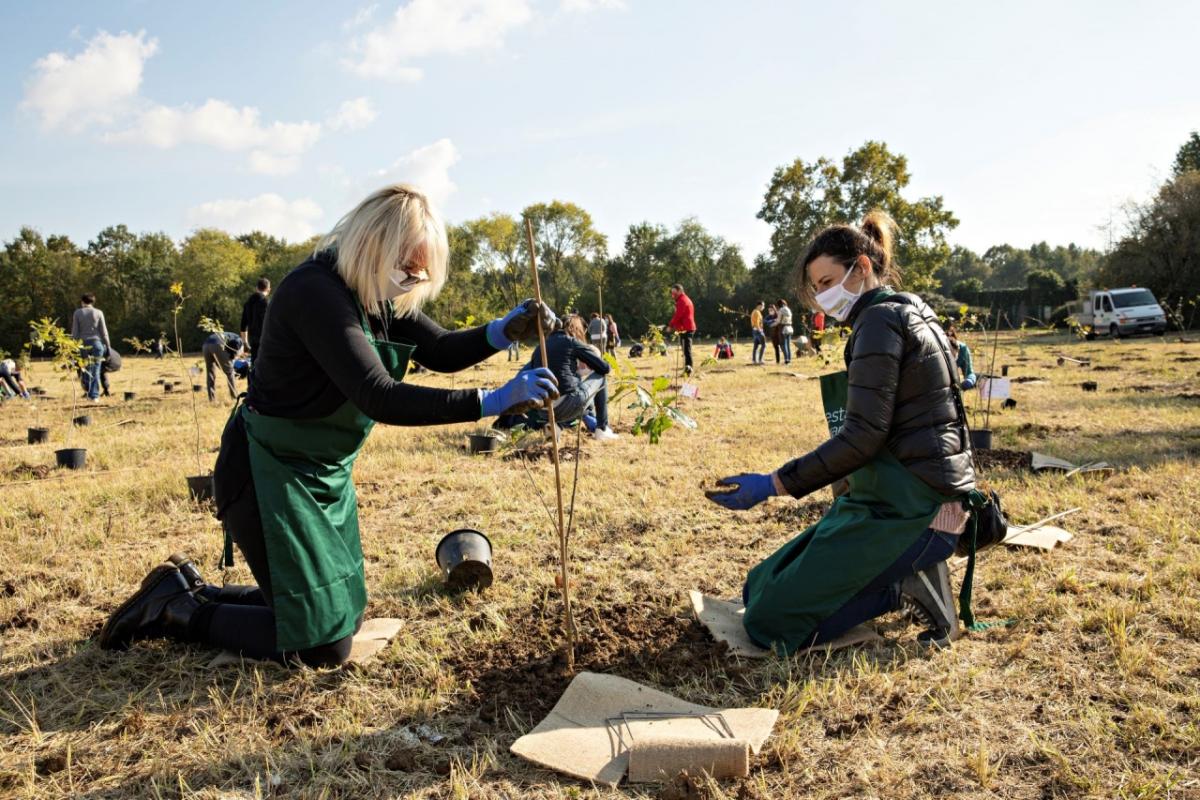A Tree Grows in Milan: Forestami's Ambitious Mission to Tackle Climate Change
Cities produce 70% of global CO2 emissions. But an innovative urban forestry project in Italy is working to slow global warming and clean the air.

Originally published by VMware
The population of the world continues to increase. And by 2030, 60% of it will live in cities, which as of today, utilize 75% of the available natural resources and produce 70% of the global CO2 emissions.
UNITED NATIONS, SUSTAINABLE DEVELOPMENT
In 2019, the City of Milan launched its Forestami project with the objective to seed 3 million trees by 2030. The goal? Improving life in Milan by providing cleaner air and counteracting the effects of climate change.
I. THE SCIENCE IS CLEAR
Increasing natural capital in its various forms—planting trees, building forests, multiplying the number of plants along the streets, squares, courtyards, roofs, and facades of our cities—is today the most effective, economical, and engaging way to slow global warming, reduce energy consumption and clean the air we breathe.
FORESTAMI
The growth of urban settlements and the decrease in vegetation are extremely serious because of the large size of the urban centers. To combat pollution and other climate change consequences, urban forestry was born.
Urban forestry: The care and management of single trees and tree populations in urban settings for the purpose of improving the urban environment.
So, why are trees so important for cities? It’s all about science. The first thing that comes to mind is that trees provide oxygen and absorb carbon dioxide. But these are just two of the many benefits of trees and green areas in urban environments.
Click here for a graphic exploring nature's impact.
The presence of trees in metropolitan areas also helps regulate the climate by:
- Reducing the heat island effect, where urban areas experience higher temperatures.
- Enhancing the reabsorption of rainwater.
- Mitigating strong winds.
- Cooling and regenerating public areas through shade.
- Reducing energy costs by helping regulate the heating and cooling of buildings.[1]
[1] FORESTAMI: A green project to improve the quality of life in Milan, 2020
II. URBAN FORESTRY STRATEGIES
Forestami was born out of a research project by Milan Polytechnic Institute. Forestami research collected the most innovative urban forestry policies and strategies around the world. Today, those case studies guide the implementation of policies and good practices to combat the effects of climate change.
To begin, the Forestami team came up with five strategies.
Trees exhale for us so that we can inhale them to stay alive. Can we ever forget that? Let us love trees with every breath we take until we perish.
MUNIA KHAN
III. THE VMWARE FOREST
To speed up the process of urban forestry, the Metropolitan City of Milan and Forestami asked the community for help. Today, over 73,000 private citizens and 45 companies support the effort financially and by physically planting trees. One of those organizations is VMware.
Ecosystems are the operating system of the earth. They allow all life to flourish and are the foundation on which we build everything else. Today, Earth’s operating system is damaged. But we are convinced that with a solutions-focused, engineering mindset, we can be part of the solution to repair and reboot it using a transformative piece of technology: trees.
NICOLA ACUTT, VP OF ENVIRONMENTAL, SOCIAL AND GOVERNANCE (ESG), VMWARE
To give back to the local community and align with its 2030 Agenda, VMware Italy and Forestami seeded 500 trees. Planting its very own “VMware Forest,” the team dedicated each tree to a customer.
Trees planted in VMware’s Forest will absorb an estimated 16.750kg/CO2 per year. That’s equal to one car driving the distance of the equator or 35 roundtrip flights from Rome to London.
Learn more about Forestami and the impact of urban forestry:
- Forestami – Project
- Forestami – Strategies

